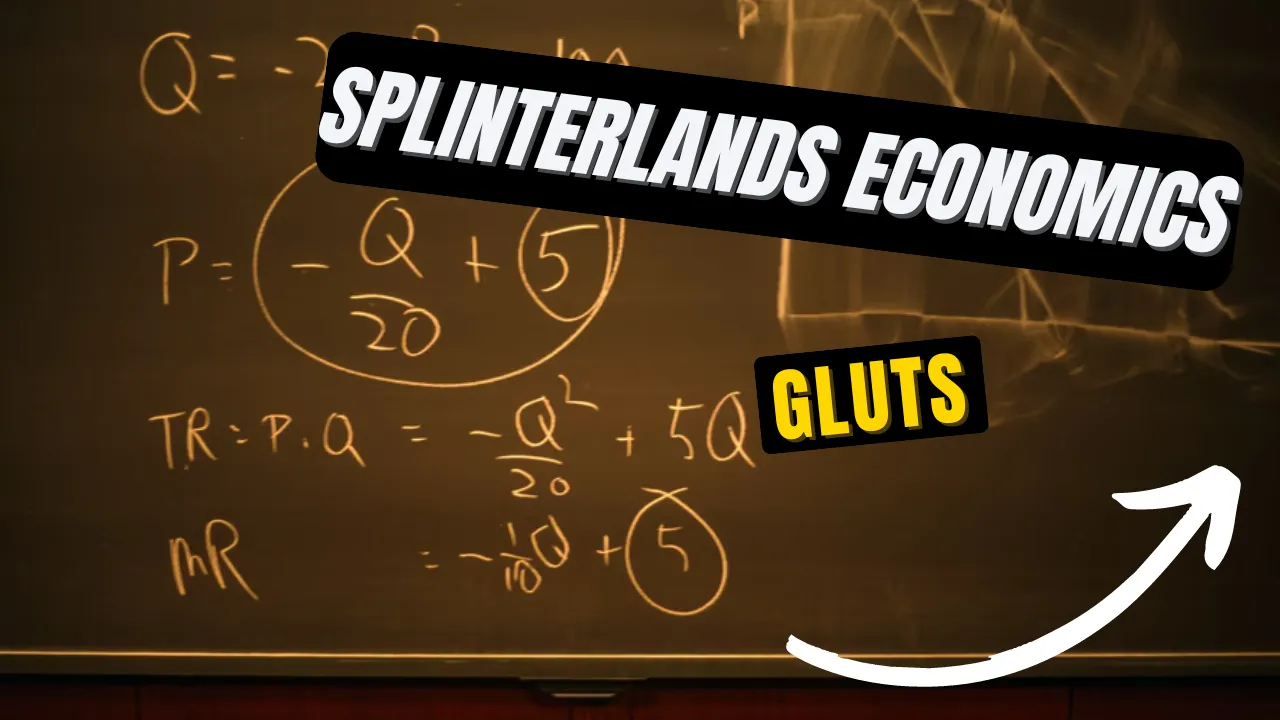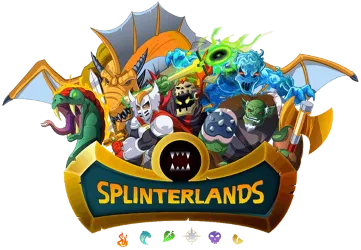Hello everyone! We are back again today with another edition of Splinterlands Economics - a series in which we introduce a basic economic concept and then apply it to Splinterlands. If this is your first time reading, just to tell you a little bit about myself: my day job is in an unrelated area but I consider myself a little bit of economics nerd - I read a little (or maybe way, way) more news than I should, double majored in econ, and am obsessed with optimization. I love the way Splinterlands is equal parts card game and resource allocation game. My goal with these articles is to share a little bit of what I know with you all.
In this series we have frequently mentioned supply, and for a good reason. Supply determines how much of a good is available on the market, and without supply there would be nothing to buy or sell, and far fewer things to talk about here in Splinterlands Economics. This week we will be talking about a specific scenario when it comes to supply and demand. Today, we will be talking about Gluts!

What are Gluts?
Okay okay, so I have to admit that I hay have fibbed a bit in the introduction - specifically, I said that our topic today deals with supply. Because while gluts do occur when there is too much supply, a glut is when there is a supply of a good which is greater than demand for that particular good. So there are two sides to it - high supply, and relatively low demand. If you have heard the term "glutton", they are related words - one is describing too much food, and the other is describing too much stuff in general.
You may be thinking that this wouldn't be a problem, because who doesn't want more stuff? In fact it is a real problem in society, and that is because of opportunity cost. It is optimal for society as a whole to maximize everyone's happiness with the available resources. When there is a glut, that means that too much of something has been made. This also means that resources were spent in order to produce that item, and there is a very good chance that those resources could have been spent producing else which would be more useful or make someone happier than the overproduced good which there is a glut of. In addition to that, there may also be costs associated with storing or maintaining the excess production.
While gluts present a problem, they also provide an opportunity - some interesting things do occur as the result of gluts. There was a glut of bologna in the late 80s. Oscar Meyer was producing far too much of this incredibly processed meat. The result? They invented Lunchables as a way to move more of their product onto shelves. Similarly, a post-war abundance of Spam led to the popularity of one of my favorite dishes, the Spam musubi.
How can we apply it to Splinterlands?
Splinterlands is a game where there are a wide variety of different items with specific supplies. Splinterlands is also an ecosystem with plenty of vocal participants who are able to debate and vote on actions to be taken by a DAO governing some of the aspects of the ecosystem. A fair amount of that debate recently has dealt with the idea of burning Chaos Legion packs, which were released earlier this year and are currently up for sale in the in-game shop. This debate provides a case study for how we might analyze potential gluts. Understanding this debate is a three part question. First, is there actually a glut? Second, if there is a glut, is the glut creating a problem? And third, if it IS creating a problem, what is the best way to address it? Note that this is a complex question with valid arguments for both sides of the debate and while I don't have all of the answers, I will attempt to present some of the considerations in the following paragraphs as well as my thoughts on them.
The first question seems straightforward at first look, but is trickier than it seems. Chaos Legion packs have been available in the store for most of the year and are currently just over 2/3 sold. Pack sales have slowed recently and there are still large amounts of the "print run" available. However, remember that a glut is supply in excess of demand. Answering this question requires us to know how long the developers intended to set to last - for example, if the set was intended to last longer than the current date and is still on track to sell out by the developer's intended date then there may be no glut at all, as the supply could still match the demand over the planned duration of the sale.
The second question - "is it a problem?" - is an interesting one due to the nature of Splinterlands being a digital ecosystem. In this situation, it requires nearly the same amount of work to produce 15 million packs as it would to produce 5 million, or 30 million - all of the necessary creative design, development, and testing work is the same either way. So the "problem", if there is one, is related to whether or not having packs readily available for sale is a good thing or a bad thing. I would argue that it is a good thing for new players entering the game as well as current players who are consistently depositing small amounts into the ecosystem to have affordable cards available, though I can certainly understand arguments that pack scarcity and rapidly increasing asset prices as the result of a burn could have an appeal.
As I just mentioned, my personal opinion is (at least for now) it is possible that there is no glut in the first place, and even if there is one then it is not a problem until the next set is ready. However, if there is indeed a glut then there are two general options to resolve it - reduce supply, or increase demand. Burning Chaos Legion packs gets brought up because it will certainly reduce supply and resolve the glut, and it does so in a relatively simple way at the developer resource level. The alternate approach of increasing demand for Chaos Legion cards is a slower process, but has the benefit of adding new aspects to the ecosystem and not making changes to previously published sales plans, at the cost of time and resources. For example, introducing card staking on land or tower defense will increase demand for cards, but doing so takes considerable time and/or developer resources.
Why should we care?
Understanding the potential problems presented by gluts helps us to understand the actions taken by both producers and consumers to overcome them. In addition to being better informed of the details of the situation, having a better grasp of the situation can directly benefit you when it comes to your investments and other asset allocation decisions. Being able to forecast a potential future glut or even just being able to recognize a current one can allow investors to take actions to either protect themselves from the fallout or to position themselves to take advantage of market opportunities.
Thank you so much for reading all the way to the end. Interested in seeing some more of my writing in the future? Be sure to give me a follow! In the meantime, if you'd like to see some of my recent posts:
Dancing with the Devil - Using Diemonshark in Battle! - Last week's battle challenge, featuring Diemonshark!
My Take on the Card Level Rewards Proposal - My thoughts on the the card level rewards Splinterlands proposal.
Splinterlands Economics: Dollar Cost Averaging - An introduction to the concept of dollar cost averaging, and how we can use it in Splinterlands.
Thinking about giving Splinterlands a try but haven't signed up yet? Feel free to use my referral link: https://splinterlands.com?ref=bteim, and be sure to reach out to me if you have any questions!
All images used in this article are open source and obtained from Pixabay or Unsplash. Thumbnails borrowed with permission from the Splinterlands team or made in Canva.




